- This FAQ tells who destroyed by Bodh Gaya Temple, looked after it in difficult times, how it was rebuilt and who manages it today. A political party is raising issue of temple management albeit peacefully for now. This matter cannot be compared with Hindu temples destroyed by invaders.
A friend from Mumbai sent me a picture of this hoarding. Going by Kanshi Ram’s picture it seems to be placed by the BSP (Bahujan Samaj Party). Kanshi
Ramji was born in a Ramdasai Sikh family-TOI, also called Bahujan
Nayak, died 9/10/2006)
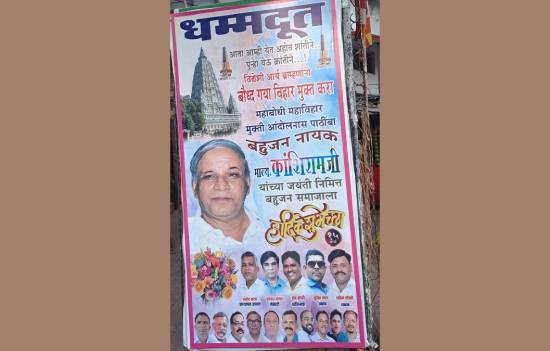
A simple
translation of what is written on the hoarding was done by a friend.
“Now we are coming peacefully.
Again we
will come with revolution.
Vidheshi Arya Brahmanano (Brahmins)
Free Bodh Gaya Vihar.
Mahabodhi
Mahavihar Free Liberation Management.
Bahujan
Nayak
Respected
Kanshiramji birth anniversary.
We wishes him Heartfelt greetings to Bahujan samaj.”
Key points made as taken from
translation are Brahmins are foreigners and Aryans and Liberate Management of Bodh
Gaya. The Aryan Invasion Theory is debunked. Does hoarding seek to spread hate
against Brahmins? We often overlook the contribution
of Brahmins to India.
Scholar, author Dr Satish Kapoor wrote
in a 2012 article in the Journal published by the Bharatiya Vidya Bhavan, “All the eleven disciples (ganadhara) of Lord Mahavira were Brahmins.
Kashyapa, the most erudite among the disciples of Buddha, credited with
founding the Dhyana School (better known as Zen) was a Brahmin. The Brahmins
have been the torch-bearers of spiritual wisdom and the progenitors of social
reform. The holy Guru Granth Sahib includes the hymns of 23 Brahmins. Banda
Bahadur who valiantly resisted, even reversed the Muslim onslaught on Hinduism
for some time, hailed from the Bharadwaja Gotra of Brahmins. Among the immortal works of Brahmins are: Panini’s Ashtadhyayi, Katyayana’s Vartikas, Patanjali’s Yogasutras, Kautilya’s Arthashastra, Charaka Samhita, Sushruta Samhita, Bharatamuni’s Natyashastra, Vishnu Sharma’s Panchatantra, Rajashekhar’s Kavyamimansa, Bhrigu Samhita etc. Aryabhatta was the first to refer to the decimal system. Brahmagupta anticipated Newton’s discovery of the Law of Gravitation.”
Like all human beings Brahmins are not
perfect.
It must be understood that when words Free Liberation Management of Bodh Gaya are used it means remove four Hindus from the nine member managing committee. It might also imply handover temple management to us.
One needs to know Hindu contribution to Bodh Gaya Temple and why 4 hindus are part of the committee. The answer to liberation of Bodh Gaya Temple Management is in FAQ format. It is based on a 2012
article by senior journalist Sandhya Jain.
1. Importance of Bodh
Gaya?
According to the ASI board there, in the 6th century B.C. Prince Siddhartha sat under this Bodi Tree to
gain enlightenment becoming Buddha.
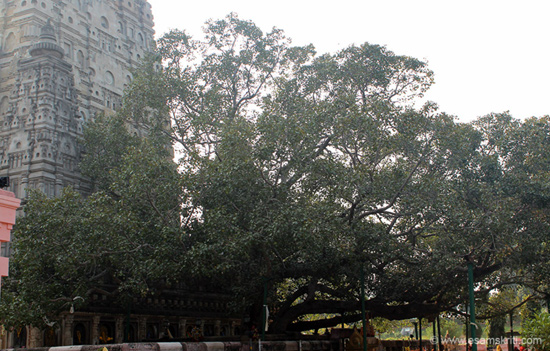 Bodhi Tree. 2012. A shoot of the tree was taken to Sri Lanka.
Bodhi Tree. 2012. A shoot of the tree was taken to Sri Lanka.
2. Who made the Bodh Gaya
Vihara?
Sandhya wrote, “Asoka also erected a stupa, which was reconstructed as the Mahabodhi Mahavihara by Gupta kings in the 7th century AD.” ASI says Asoka set up the diamond throne representing the seat of enlightenment in 3rd century B.C. ASI says present temple made in 6th
century.
Sandhya wrote, “Well, the Gupta rulers who built the great Mahavihara were denominationally Hindu, and the sacred site was in the safe custody of Saivite sanyasis for centuries, until the British instilled the poison of separatism into Buddhist hearts worldwide.”
3. When was Bodh Gaya
Temple destroyed and by whom?
Sandhya wrote, “In the 13th century, the Mahavihara was sacked by the Turks; the Bhikshus massacred or scattered, and the site abandoned.” ASI board tells what happened to Nalanda i.e. 86 kms away.
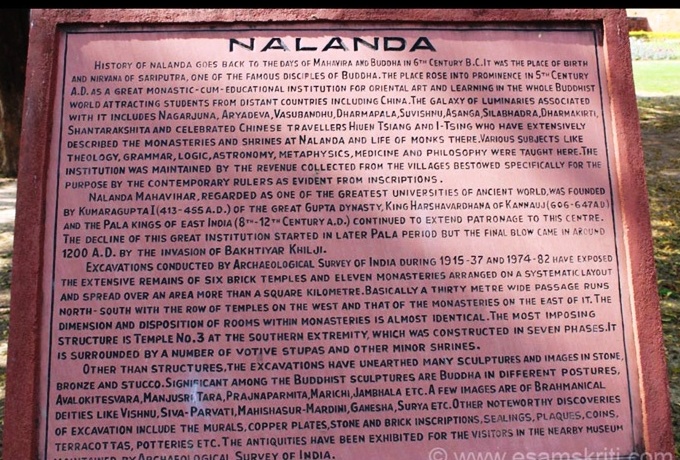 Nalanda was destroyed by Bakhtiyar Khilji around 1200 A.D.
Nalanda was destroyed by Bakhtiyar Khilji around 1200 A.D.
4. Who looked after the
Mahavira after it was abandoned?
Sandhya wrote, “Around 1590, an itinerant Saivite sanyasi, Mahant Ghamandi Giri, arrived at Bodhgaya and took charge of the Mahavihara. The present Mahant is 16th in the line of succession of Mahants who rescued the Mahavihara and kept the name of Buddha alive in the dark centuries when no priestly or lay community survived to perform the prayers and rituals.”
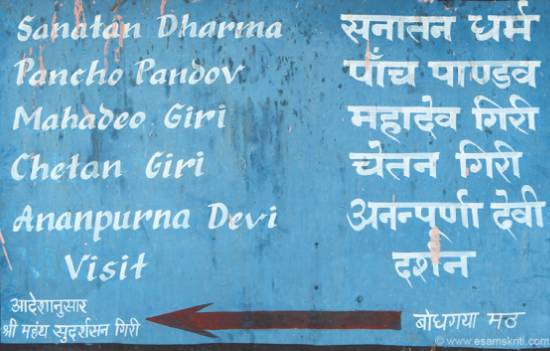 Four small temples exist close to the main temple.
Four small temples exist close to the main temple.
5. How was the Temple
rebuilt?
Sandhya wrote, “In 1883, Sir Alexander Cunningham, J.D.M. Beglar and Dr Rajendra Lal Mitra renovated the temple on scientific lines.” I remember local guide telling me that a coin depicting the pre-destroyed temple was found in a Kolkata Museum. Coin design became the basis for the renovated temple.
6. What happened post 1947?
Sandhya wrote, “After independence, the Bihar Legislative Assembly passed the Bodhgaya Temple Act (Bihar XVII of 1949), which created the Bodhgaya Temple Management Committee, to take care of the temple and pilgrims, and ensure proper worship. The Committee comprised a Chairman and eight members nominated by the State Government, all of whom had to be Indians. In 1953, presiding Mahant Harihar Giri handed over the management to the then Vice President of India, Dr. Sarvapalli Radhakrishnan. Since then, the management committee has comprised five Hindus including the District Collector who is chairman, provided he is a Hindu, and four Buddhists.”
Those seeking to reclaim management of
Bodh Gaya Temple cannot overlook the Hindu contribution in preserving the temple during times when thousands of temples were destroyed. Their aim appears to be to get the four Hindus out of the temple management committee.
It seems more like a BSP move to resurrect itself politically, by making taking over management of the temple an issue to unite neo-Buddhists in Maharashtra etc. Perhaps,
the desire to control comes the increasing number of international devotees and
their contributions. See album of
devotees here
Here are some pictures. All Bodh Gaya pics from my 2012 yatra.
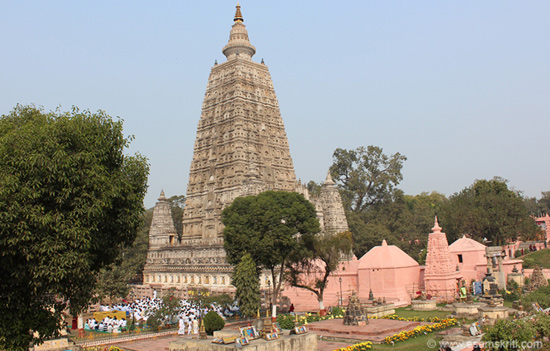 Side view of temple.
Side view of temple.
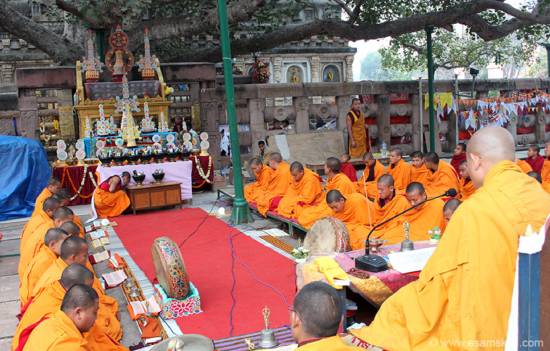 Buddhist devotees listening to a scholar.
Buddhist devotees listening to a scholar.
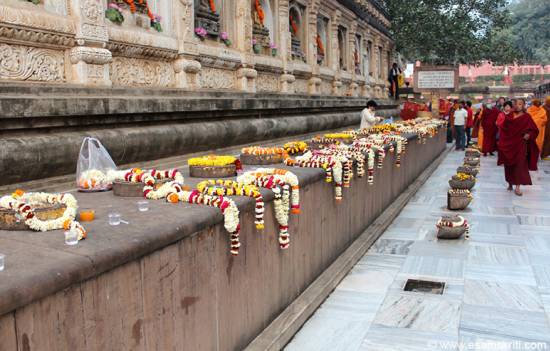 Buddha spent the third week post enlightenment walking up and down here.
Buddha spent the third week post enlightenment walking up and down here.
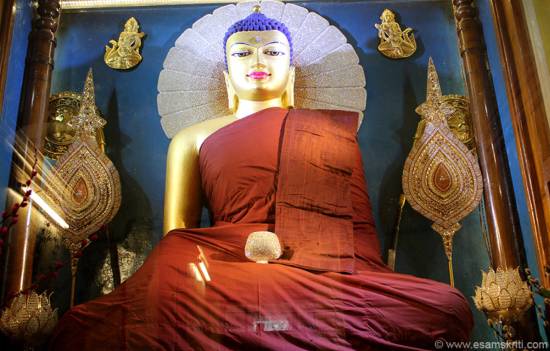 Murty of Buddha inside sanctum. Pranams.
Murty of Buddha inside sanctum. Pranams.
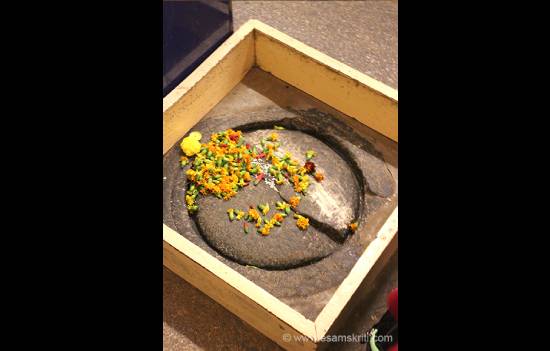 Remains of a Shivlinga inside the sanctum. 2012.
Remains of a Shivlinga inside the sanctum. 2012.
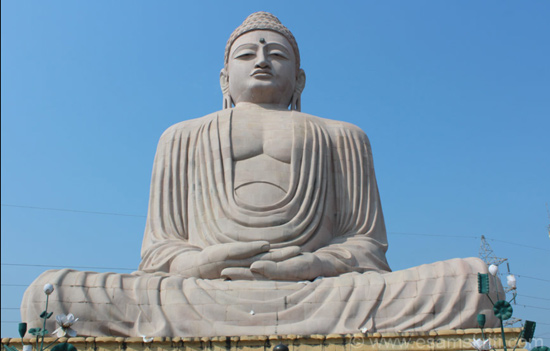 Great Buddha Statue close by is a symbol of Indo-Japanese veneration for Buddha. 2012.
Great Buddha Statue close by is a symbol of Indo-Japanese veneration for Buddha. 2012.
Unlike other countries Buddhism is well
respected in India. Respected K Elst
wrote in Pragyata.com in 2020, “By contrast, Buddhism is not oppressed or endangered in India. It is not obstructed in worshipping at its traditional sacred sites, including the Mahabodhi temple, which Hindus have made available for Buddha worship. India provides shelter to the Dalai Lama, and has sanctioned the creation of a network of Buddhist monasteries and institutes, including a Tibetan-Buddhist university (in Sarnath) and the nerve centres of several international Buddhist organizations It is, moreover, one of the few countries where even most non-Buddhists have sincere respect for the Buddha and his Dharma. And yet, of all places, India is the one where Arya Sasai has to “liberate” Buddhism from Hindu “oppression.” Buddha image found in Rani-ki-Vav Patan i.e. in Gujarat. The Brihadesvara Temple Tanjore in Tamil Nadu (made 1010 A.D.) has three depictions of Buddha.
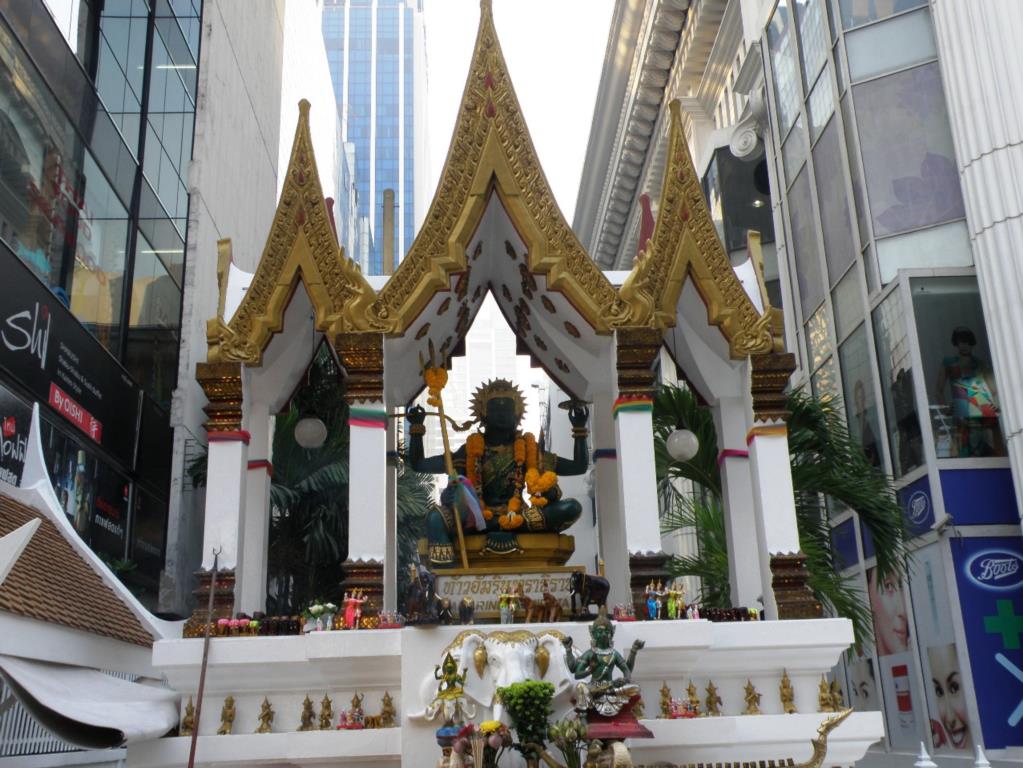 There is a Lord Indra Temple in Sukummwit Street, Bangkok where Indra is worshipped by Thai Buddhists.
There is a Lord Indra Temple in Sukummwit Street, Bangkok where Indra is worshipped by Thai Buddhists.
There is a colonial/liberal agenda to make
Buddhists disassociate from Sanatan Dharma. The neo-Buddhists (Ambedkarites) dislike
for Sanatan Dharma is different from how a genuine Buddhist like Dalai Lama
views Hinduism.
Nevertheless it is sufficient to recall
what former President Scholar Dr S. Radhakrishnan wrote in Indian
Philosophy Volume 1, "The 4 noble truths of Buddhism correspond to the 4 truths of Samkhya as put in the Samkhyapravacanabhasya: “1. That from which we deliver ourselves in pain. 2. Deliverance is the cessation of pain. 3. The cause of pain is the want to discrimination between prakrti and purusa, which produces the continuous union. 4. The means of deliverance is discerning knowledge.” (399)
Hindu and Buddhist strains co-exist in Japan,
Tibet and Thailand. See links 6-8.
Some political parties and liberals may seek to strengthen their case for controlling
management of Bodh Gaya Temple by comparing Hindu pleas for re-making of Kashi
Vishwanath or any other temple destroyed by invaders.
What is common to both is that they were
destroyed by invaders. Hindus never destroyed the Bodh Gaya temple. Utkarsh
Mishra wrote in Rediff.com, “Three years later, in 1669, Aurangzeb ordered the dismantling of the Vishweshwur, or Vishwanath temple, writes Professor Desai. 'Built on the plinth of the dismantled Vishweshwur temple', the Gyanvapi mosque 'abuts its lone standing wall.”
I am sharing pictures of Kashi temple.
Please compare with Bodh Gaya Temple.
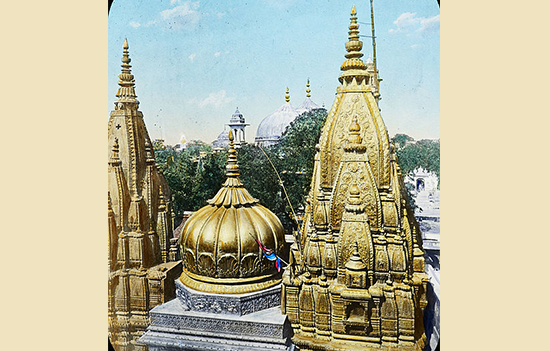 Current day temple made by Ahilyabai Holkar in 18th century, enhanced in 21st century.
Current day temple made by Ahilyabai Holkar in 18th century, enhanced in 21st century.
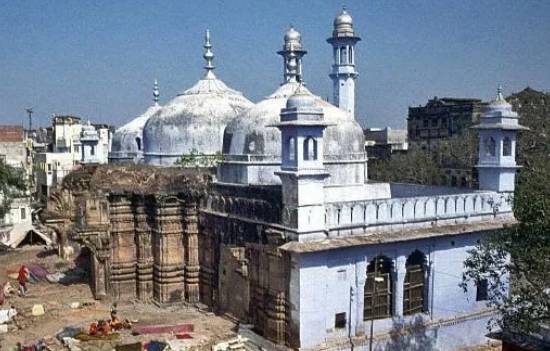 “Remnants of backside wall, with projections of the Hindu temple clearly visible.” Credit OpIndia.com
“Remnants of backside wall, with projections of the Hindu temple clearly visible.” Credit OpIndia.com
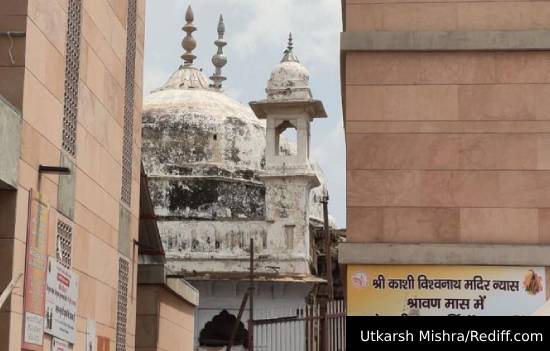 “Gyanvapi mosque inside Kashi Vishwanath temple complex in Varanasi.” Credit Rediff.com
“Gyanvapi mosque inside Kashi Vishwanath temple complex in Varanasi.” Credit Rediff.com
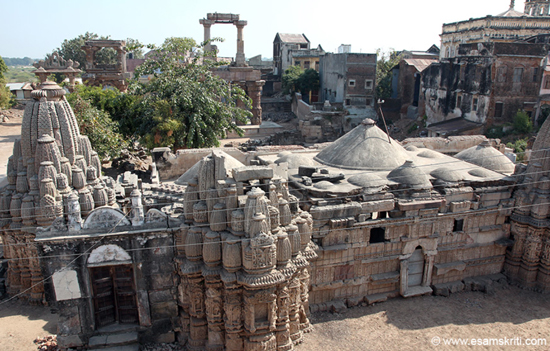 A Shiv Temple in Sidhpur, Gujarat that nearly became a Mosque.
A Shiv Temple in Sidhpur, Gujarat that nearly became a Mosque.
Read, reflect and decide for yourself.
Also
read
1. SC
opens Temple Reclamation Door
2. Caste
in Sikhs
3. Album Bodh Gaya Temple
4. Ambedkar
erred, Buddha was a Hindu
5. The
Samkhya ontologies of Phenomenology and Buddhism
6. Lord
Indra in Buddhism
7. Indian
origins of Tibetan Buddhism
8. Harmonious
blend of Hindu, Buddhist, Shinto strains in Japan
9. An
afternoon at the Kashi Temple and Mosque there
10. Bodh Gaya Temple
controversy
11. Congress
strategy is to divide India by caste
12. Why
did Buddhism vanish from India
13. SC
order on Untouchability 2024